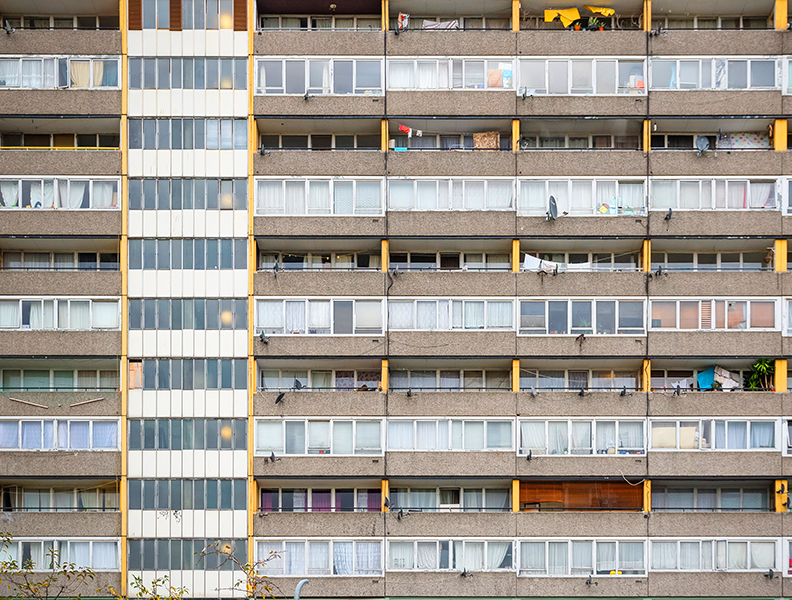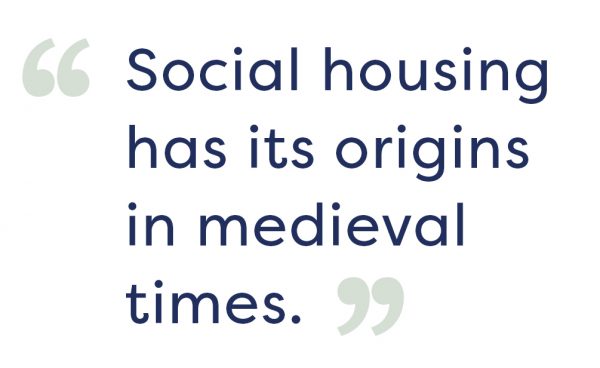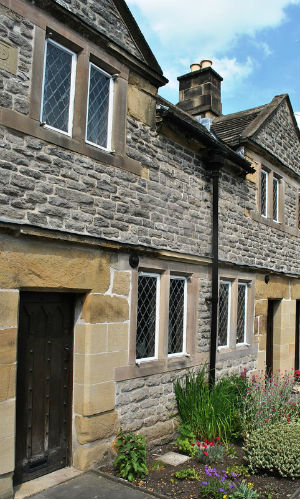How social housing became the hero Gotham needs

The UK is wading its way through a housing crisis – but if you’re one of the millions of people struggling to buy or rent a home, or if you have in the past, then you don’t need me to tell you that.
One answer is social housing. Four million households – a whopping 17% of the population – already live in social housing and the government reckons England needs another three million on top of that by 2040.
So, we know where we need to go, but can the past help us get there?
The origin story
Social housing – housing for people on lower incomes or with particular needs – has been the hero Gotham needs for over a century now. However, its seeds were planted way back in the 10th century.
‘Almshouses’ started popping up in medieval times as a way for the church to help the poor. The oldest known almshouse, the Hospital of St Oswald, is in Worcester and was founded around 990.
Next, jump forward to Victorian Britain. Thanks to urbanisation and the Industrial Revolution, sanitation was less than ideal, overcrowding was rife and there were rumours of people were spontaneously combusting from drinking too much gin.
It wasn’t all bad though. The Age of Philanthropy rose like a phoenix out of the sludge and some kindly rich people started setting up charities to help the poor.
Local authorities began clearing housing slums and the 1890 ‘Housing for the Working Classes’ Act then gave them the power to begin building more housing for the lower classes. It also meant landlords had to provide basic health standards for their tenants.
Social housing is born
The First World War was a turning point for social housing. At this point most people were still in private rented homes but with resources and land in short supply during the war, landlords started squeezing tenants, knowing they didn’t have anywhere else to go.
This led to more tenant safeguards from the government, which is great, but it also meant less people wanted to be landlords, so the focus turned to home ownership.
The day after the war ended in November 1918, Lloyd George promised to begin work on half a million ‘Homes fit for Heroes’.
The Addison Act, named after the Minister of Health Dr Christopher Addison, was then introduced in 1919 to provide the power and funding to make it happen. Local authorities like councils now had to provide social housing, but the Act was cut three years later after just 176,000 were built.
As the 1920s arrived councils were given more funding – but also more responsibility – for social housing. The ‘suburban dream’ also arrived and more people started to buy property as more affordable housing appeared in the ‘burbs.

Streets in the sky
On top of all this upheaval, the Second World War struck, which didn’t help matters. After the war though, the government had a big push to build more housing – mostly to replace ones that had been destroyed – building more than a million homes, 80% of which were council houses.
The 1950s also saw a boom in social housing production, particularly high rise flats, which came to be known by the very futuristic term ‘Streets in the Sky’. These were seen as pretty desirable places to live and coincided nicely with the birth of the ‘welfare state’.
By the early 1970s though, these concrete jungles had become run down and pretty dodgy. On the upside, the decade saw a growth in housing associations, the regeneration of older housing and a focus on improving communities.
As Thatcher entered in the picture in the ’80s, she adopted The Right to Buy as a signature policy. By the time New Labour arrived in ’97 many council houses had been moved over to housing associations.
Where are we now?
In the noughties The Decent Homes Standard was introduced to make sure the social housing on offer met certain standards by 2010.
In the early years of the coalition, the housing crisis was acknowledged as one of the biggest problems it faced. We’re still in a crisis nearly a decade later, which is why milennials are sometimes referred to as ‘generation rent’, as many struggle to get onto the property ladder.
To speed along the government’s social housing target, it’s launched a £9 billion affordable homes programme to deliver 250,000 homes by 2022. This includes social housing, with an additional £2 billion promised to 2028.
What we’re doing to help
That’s where we come in. At Onward we build and manage social and affordable housing across the North West. Our goal is to provide good quality homes that everyone can afford to live in. We do this by building new and different types of homes to suit a range of circumstances, while also going beyond just bricks and mortar helping to create and support communities.
We have lots of options available if you’re looking to rent or buy a new home, including Shared Ownership


